Accurate Understanding Of Anterior Bridge
What is an Anterior Bridge?
The Anterior Bridge is a type of dental prosthesis that fills the gap left by one or more missing teeth in the front of the jaw (Anterior Teeth including four incisors and two canines in the upper jaw, and four incisors and two canines in the lower jaw). Pontic (prosthetic) teeth are anchored to your surrounding healthy teeth (abutment teeth) in one of two ways depending upon the type of bridge you receive to replace these missing teeth.
They are usually made of ceramic, but can also be made from gold, alloys, porcelain, or a mixture of these materials (often a metal substructure covered by porcelain) to restore chewing function, enhance aesthetics, and prevent the shifting of adjacent teeth.
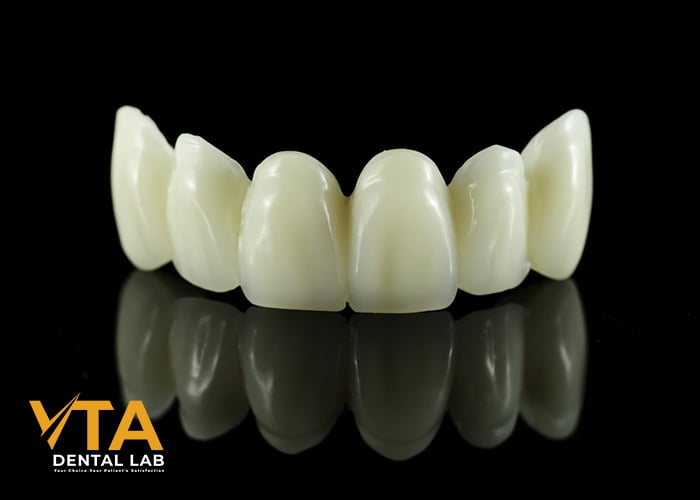
Indications for Using Anterior Bridge
Missing Teeth
One of the most common indications for an anterior bridge is tooth loss due to decay, trauma, or other dental issues. The Anterior Bridge can closely mimic the shape of a natural tooth, improving aesthetics as well as restoring chewing and biting function in the anterior region.
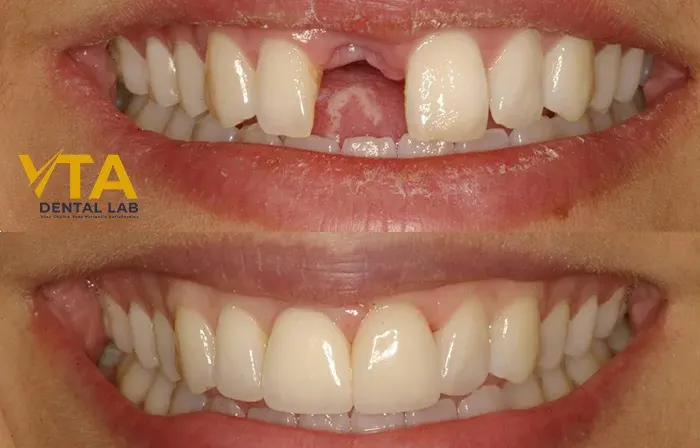
Missing Teeth and After
Replacement For Partial Dentures
For patients who have lost multiple front teeth and are seeking a more permanent solution than removable dentures, Anterior Bridge will help maintain stability, prevent tooth movement, and support facial structure—functions that removable dentures cannot provide.
Limited Space for Implants
The optimal solution for cases of anterior tooth loss is always implant restoration. However, in some instances where patients do not have sufficient bone density or space for implants, a bridge can be a suitable alternative.
Types Of Anterior Bridge
Traditional Anterior Bridge
This is the most common type of bridge, consisting of Anterior crowns (caps) on both adjacent teeth and a pontic (artificial tooth) in between. By reducing the enamel of the two adjacent teeth (abutment teeth), space is created for the bridge. The dentist will then attach the crowns to the abutment teeth, and the artificial tooth (pontic) will fill the gap left by the missing teeth. A traditional anterior bridge is indicated in cases where the patient has healthy natural teeth on both sides of the gap.
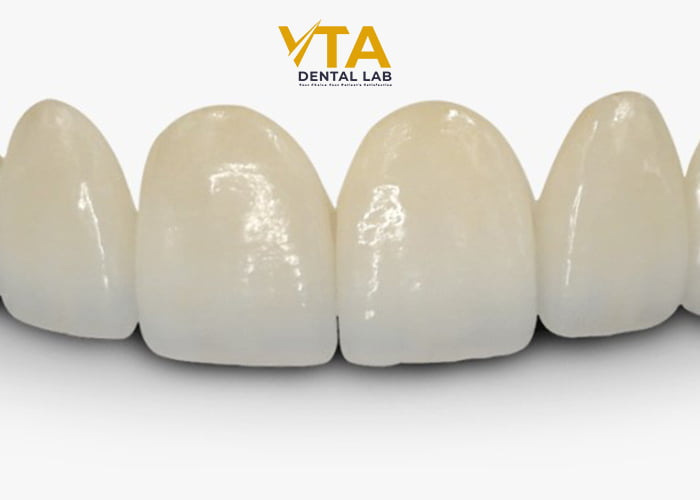
Traditional Anterior Bridge
Cantilever Anterior Bridge
Cantilever Bridge is similar to a traditional bridge but different in that a cantilever bridge is attached to only one end of the abutment tooth, rather than both ends. The dentist will attach the bridge to your abutment tooth, and the artificial tooth (pontic) will ‘hang’ or extend over the gap, with the other end of the bridge unsupported by any tooth.
It is not as stable and secure as a Traditional Bridge, so it is indicated for cases where there is only one missing tooth and a healthy adjacent tooth, or where there are natural teeth only on one side of the gap.
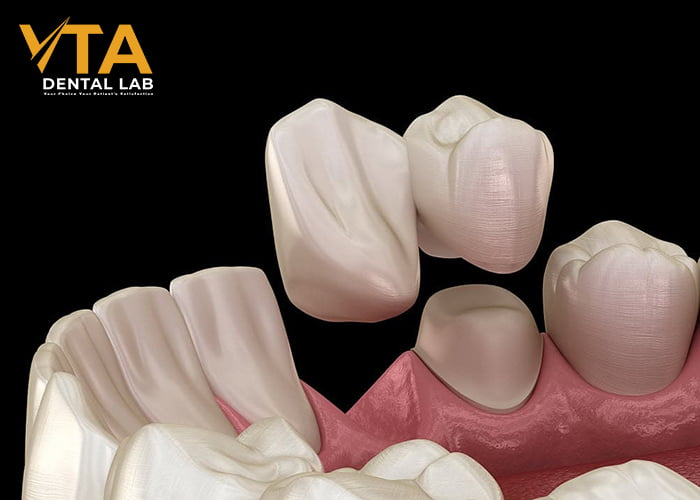
Cantilever Anterior Bridge
Maryland Anterior Bridge
This type of bridge includes one or two artificial teeth attached to thin wings, which are bonded to the inner surfaces of the adjacent teeth without requiring excessive reduction of natural tooth structure. As a less invasive solution, it helps to preserve natural teeth as much as possible but it is not as secure and stable as a traditional anterior bridge or a cantilever anterior bridge. Therefore, it is only indicated in cases where the adjacent teeth are healthy and in positions that do not endure significant chewing forces (such as incisors).
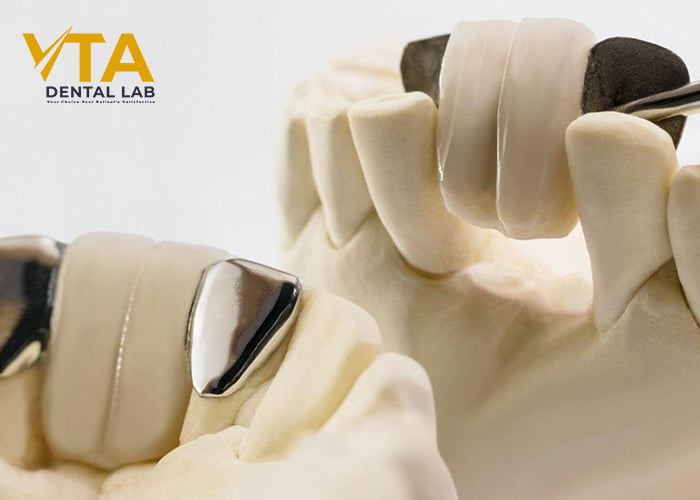
Maryland Anterior Bridge
Product Suitable For Anterior Bridge
This restoration site not only demands high standards for functional recovery, durability, and biocompatibility but also for aesthetics. Therefore, the products used for an anterior bridge need to strike a balance between strength and aesthetics. Additionally, factors such as the position of the bridge, the patient’s preferences, the dentist’s recommendations, and specific clinical situations also influence the choice of products for the Anterior Bridge. Below are some commonly used products:
Layered Zirconia and HT Zirconia Anterior Bridge
Layered Zirconia and High Translucent Zirconia are among the most popular products for anterior bridges. They can provide patients with extremely high-quality restorations due to the strength of zirconia, which allows it to function similarly to PFM restorations. The layers of porcelain give the teeth a color that resembles natural teeth, enhancing aesthetics and providing a natural appearance for anterior positions. The zirconia margins help maintain excellent gum aesthetics, even after these restorations have been in the mouth for a long time.
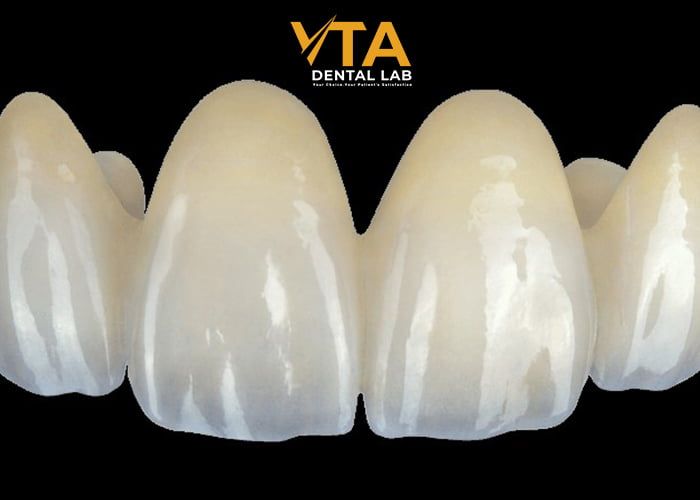
Layered Zirconia and HT Zirconia
IPS.Emax Anterior Bridge
In the case of anterior teeth, where aesthetics is the top priority, IPS e.max is an excellent choice. This material offers exceptional translucency and color-matching capabilities, along with high flexural strength that ensures durability while maintaining the natural appearance of the restoration. Additionally, its good biocompatibility makes it suitable for all oral health conditions, especially for patients with a history of metal allergies.
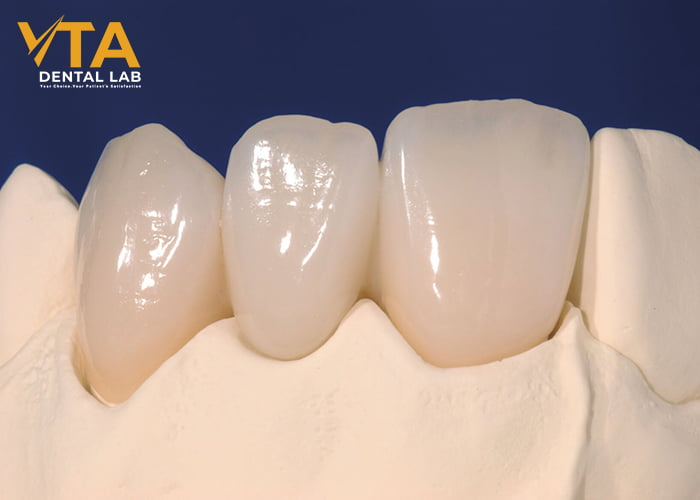
IPS.Emax
Solid Zirconia Anterior Bridge
In terms of aesthetics, solid zirconia may be inferior to layered zirconia, HT zirconia, or IPS e.max. However, it offers superior durability many times over. For patients with a documented history of nighttime bruxism, who may have previously experienced fractures in posterior or anterior teeth, or for cases involving multi-unit bridges, solid zirconia is an ideal choice. This material is extremely strong, provides an excellent fit, is highly resistant to wear, and is unaffected by acids in the mouth, making it suitable for situations where strength is the top priority.
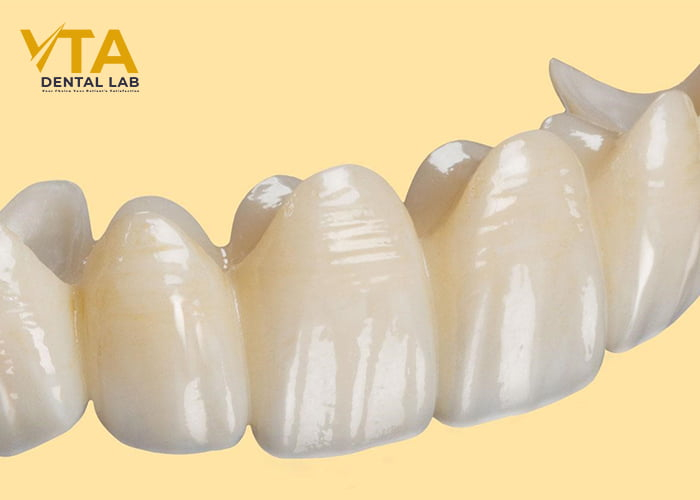
Solid Zirconia
At VTA, we offer a wide range of restorations made from ceramics, gold, alloys, or a combination of these materials. If you would like to discuss a specific case in more detail, our experienced technical team is always ready to assist you. Please contact us through our website: